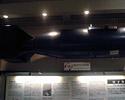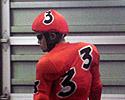
Recently on Cyclingnews.com |

|
Benny K in the 'land that time forgot':
The Ben Kersten diary 2007
Ben Kersten is one of the world's finest and fastest track cyclists. The Australian is reigning Commonwealth Games gold medallist in the kilo, Australian champion in the sprint, kilo and keirin, and the Australian male track cyclist of the year. This year he is one of the international riders invited to Japan to attend the International Japanese Keirin school.
Follow Benny K on his journey as he learns the techniques, rules and traditions that make up Japanese keirin racing in this unique diary from 'the land that time forgot'. You can also check out Benny's own website and he is also a strong supporter of the the Illawarra Institute of Sport, from his home town of Wollongong, just south of Sydney in NSW, Australia.
June 26, 2007
Senko, Makuri and Oikomi

|
How any city has the ability to start again from scratch like they have done I truly do not know. It is a strong reminder why we should abolish all nuclear weapons.
On another not so monumental note, please take a look at the title of this entry - Senko, Makuri, Oikomi. These three words have haunted my long train ride back to Shizuoka. These are the names of three positions and they are the foundation of every Japanese Keirin.
Senko (Lead out man), must attack 800m - 400m before the finish.
Makuri (2nd sometimes also 3rd wheel), must not attack any earlier than about 300m before the finish.
Oikomi (3rd sometimes also 4th wheel), must not attack any earlier than about 150m before the finish.

|
A Japanese Keirin has nine riders in it versus the International rule of six. In ideal terms the punters and the association wish to see the riders form three opposing lines of three for each race. Usually riders from the same area organise themselves as to what position they will take depending on their strengths. If you don't have any other local riders in your heat you organise with people you know who want to ride in a position you don't. If you don't know anyone, for example us the Internationals, you just have to get whoever puts their hand up. You will begin to see the problems for us with this.
One Keirin goes for three days. Every day is like a small final with pretty good money, but also acts as a qualification to advance further towards the big final. Everybody continues throughout the three days, some downward toward smaller finals, some upward towards the big final.
The night before every race day you must nominate what gear you will ride and nominate what tactic: yes, my favourite words, Senko, Makuri or Oikomi. This is locked in with the newspapers and then and there is NOTHING that can be done to change it. Tactics and gear selection go out to all the bookies and then the people start to bet according to that information.

|
Now, the idea of riding Senko (must attack 800m - 400m before the finish) and committing yourself on the front of eight good Keirin riders for so long seems absurd to say the least, but here's where the positions come into it. If you're riding Senko, the guy who has nominated to go behind you (Makuri), will protect you by physical force against anyone who wants to pass. In turn the rider behind him (Oikomi) will do the same for him. They will protect you until it's their time to try and win and then it's only you versus your own formation of three rather than the whole nine.
This makes the betting process more calculated. They don't like to see solo kamikazes breaking up pre-organised formations. When you have good riders in your formation this is the only way you stand a chance against eight others. Unfortunately, in Hiroshima I had some creepers in my formations and ended up riding away from my protection every race.
This left me on the front trying to ride against the other formations for the whole last lap. I was lucky enough (and I guess a little strong enough) to hold them off during the first and second days, coming second both days and advancing to the big final.

|
The other Internationals in my group - Jose Antonio Escuredo and Damian Zielinski were very unlucky and missed any further progression. Jose was carrying a torn quadriceps and Damian crashed while winning. Meeting another International in the final is what you dream about, because being alone is very... lonely.
With the disappointment of my Makuri and Oikomi riders not being able to keep up with me in the previous two days, I decided to go Makuri myself but with no nominated Senko. This meant I had no one to follow but was leaving it all until the last half lap. I was fed up with second place and had to take a chance to win. The Japanese are masters at this and saw straight through me. As soon as I made my move with 300m to go, so did the seven in front. I rode the last lap all the way around the fence stuck on the hip of the same seven, finishing... 8th.
I wasn't happy with second and took a chance to try and win.
Is the lesson to be happy with second? Or not to take a chance? I don't know.
I do know that I'm here to win, so I guess I will keep taking some chances, and learning more lessons.
Photography
For a thumbnail gallery of these images, click here
Images by Ben Kersten
- The Internationals meet the media in a bowling alley
- A replica A-bomb in a Hiroshima museum
- The results of a crash are apparent on Damian's leg
- Big armour small man
- The typical armour worn by Japanese keirin riders
- Throwing goodies to the fans
- Meeting the fans
